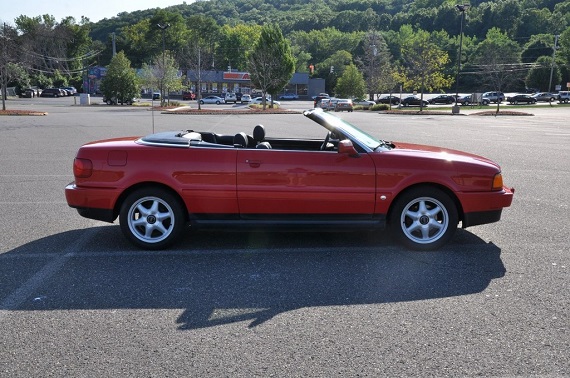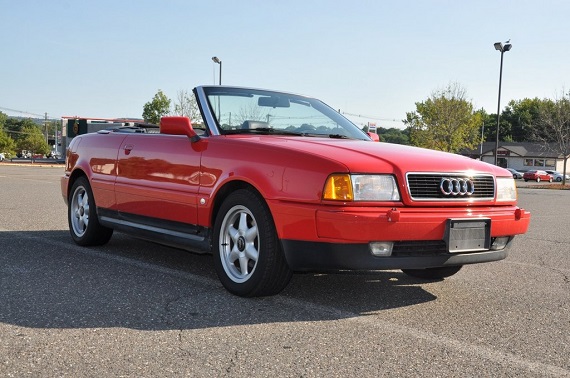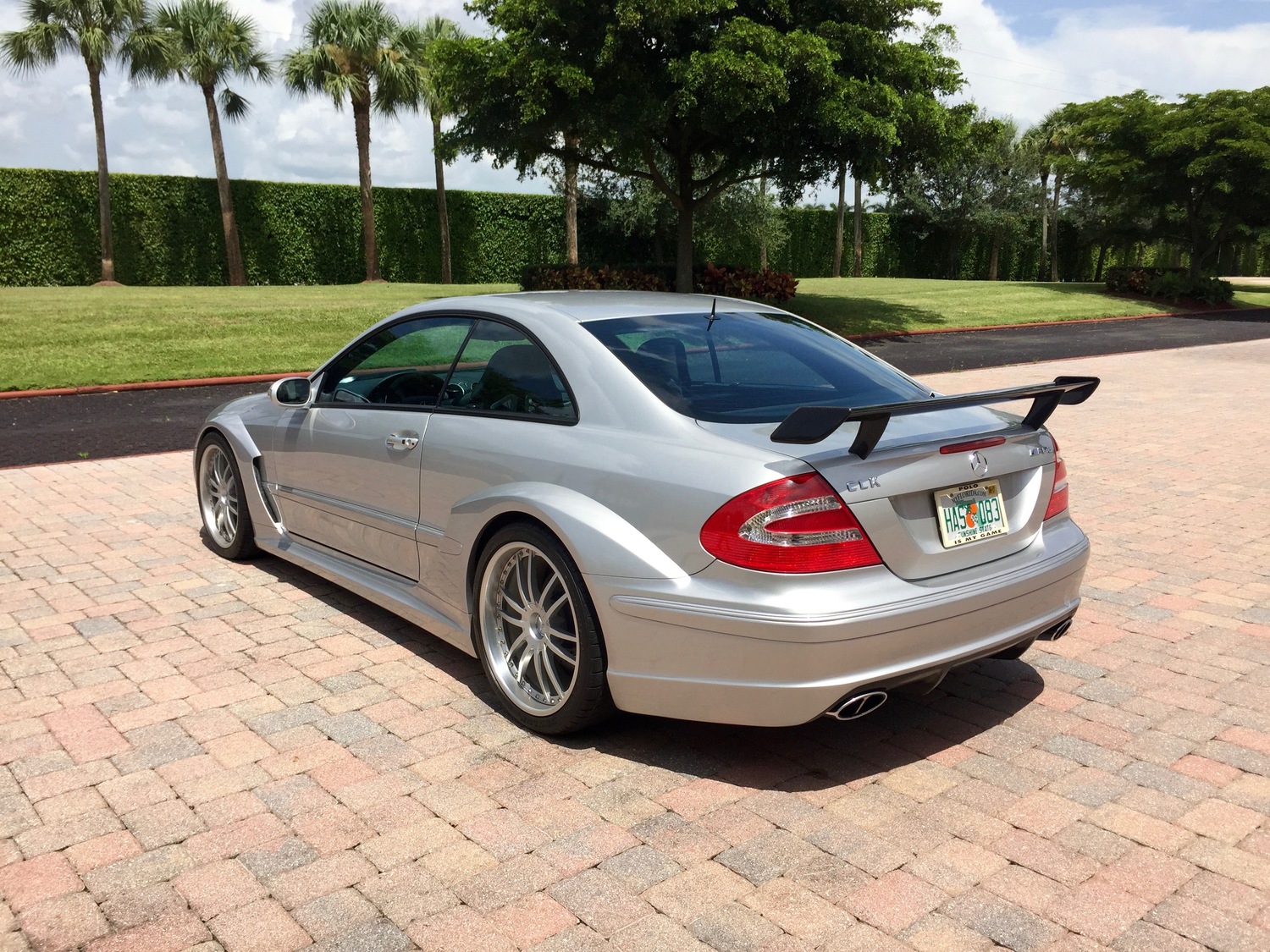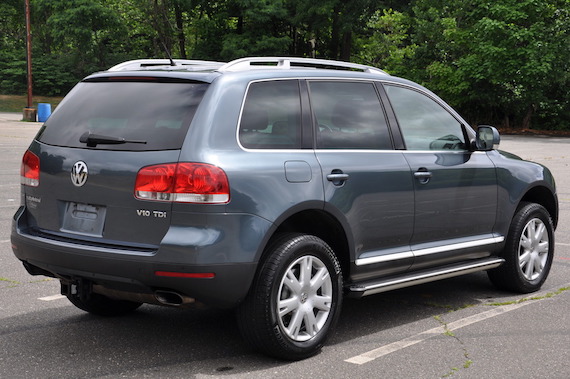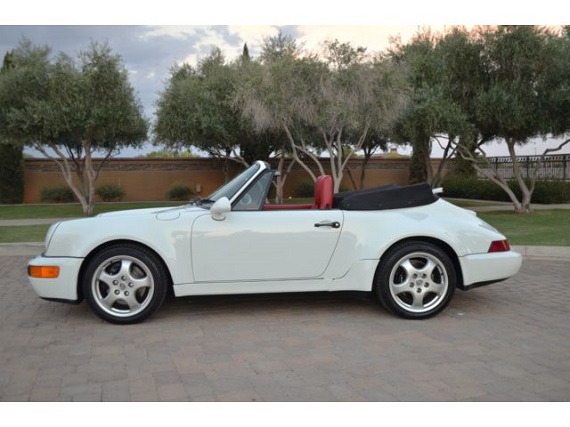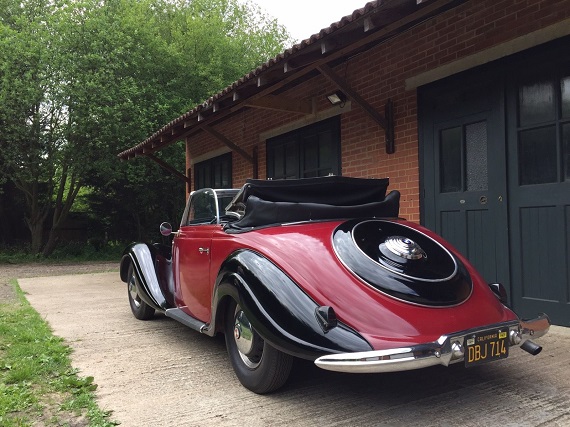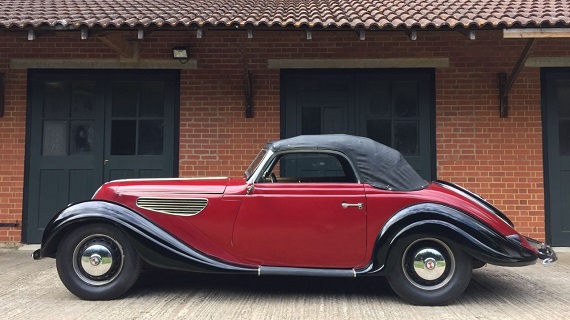For enthusiasts, the removal of the Coupe Quattro – even if it was a bit slower and softer than it could have been – and replacement with a front-drive, automatic-only convertible was a bit of a sad commentary. But it looked pretty nice, keeping the Coupe’s profile and opening the top on Audi’s foray into convertibles. Audi sold a little over 1,000 per a year for the end of the B4 run, extending the life of the model to an impressive 13 years into 1998. End of the run Cabriolet models also offered some sport options including rarely seen seats and more often sported 16″ Votex/Ronal wheels, such as this ’97 wears:
German Cars For Sale Blog Posts
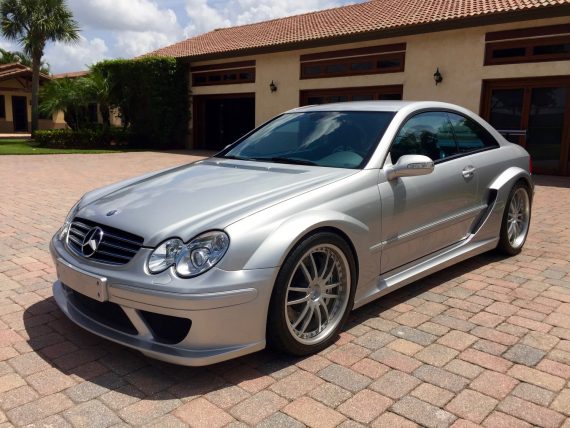
Move over Black Series, your body work is out classed here. A little over 11 years ago Mercedes took their normally tame CLK and went insane. Modeled after the 2003 CLK which won the DTM championship that year, the road-going CLK-DTM was much more than the typical AMG offerings that simply added on to the standard car that came from Mercedes. This car was totally rethought and the majority of it was re-engineered. That’s what makes this car so different from a CLK55 both inside and out. Even more special is that they only produced 100 coupes and 80 convertibles, with none of them being sold in the U.S.. But today we have this 1 of 100 car for sale in West Palm Beach, Florida. So let’s take a closer look at this DTM monster for the streets.
CLICK FOR DETAILS:Â 2005 Mercedes-Benz CLK-DTM AMG on Hemmings
2 CommentsAfter spending a weekend riding around in a friend’s Volkswagen Touareg with the V6 TDI engine, I came away impressed. If you read GCFSB on a regular basis, you’ll know that I’m not a fan of SUVs, but this one is quite comfortable and has plenty of smooth diesel torque. Taking off from a standstill, I was rather impressed just how quick on its feet this truck was. I can only imagine what the power of four more cylinders in the same diesel format would bring. Thankfully, a few Touareg V10 TDIs made their way to the US market at a time when Volkswagen was throwing a lot of things at the wall to see what would stick. These experiments included in the Phaeton and the W8 engine that found its way into the B5.5 Passat. The Touareg V10 TDI was not a huge seller and gave way to the V6 TDI, but they were powerful enough to tow a Boeing 747. This 2007 Touareg V10 TDI for sale in Connecticut is perfect for those out there with heavy hauling demands.
CLICK FOR DETAILS: 2007 Volkswagen Touareg V10 TDI on eBay
5 CommentsI’m a sucker for a bright red interior, and Can-Can Red is one of the best, so naturally I was immediately drawn in to this 964. Here we have a 1992 Porsche 911 America Roadster, located in Arizona, with 47,720 miles on it and, of course, that fantastic Can-Can Red leather. The America Roadster distinguishes itself from other 964 Cabriolets by its wider rear, braking, and suspension all borrowed from the 964 Turbo along with the deletion of the rear seats. I’ve written that the 964 is an exception for me in that it is the one 911 model where I prefer the narrow-body design relative to the wide-body. The narrow body seems proportionally just about perfect and I find that the wider rear disrupts that. I am probably among a minority in this. That said, I’ve slowly begun to come around to the wide body, with a caveat. I happened across a very nice looking 964 Turbo on our streets the other day and I’ll admit that the wider rear of the Turbo really showed well. It fit the personality of the Turbo, providing a degree of menace and purposefulness to the exterior that the narrow body lacks. But that’s the Turbo. On a Cabriolet I’m not so sure I prefer it, but the overall lines of the Cabriolet 964 aren’t as good as on the Coupe so perhaps if I saw it in person I’d come around. But again, I think I’m in the minority on this and the America Roadster, with that wider rear, is pretty well regarded. Add in the improved braking and suspension of the Turbo along with a limited production run of 250 examples and you have a pretty desirable 911.
CLICK FOR DETAILS: 1992 Porsche 911 America Roadster on eBay
3 CommentsWorld War II changed the map of Europe, and the post-War period was a strange rebuilding and re-allocation period which saw serious changes to some of the names you know today. Volkswagen, a brand that effectively hadn’t really existed before 1939 and the outbreak of war, found itself the benefactor of British intervention afterwards and became the company we know today. Mercedes-Benz, similarly, picked up the pieces and continued on. Auto Union and the companies of the four rings fell inside the Soviet area of control, and as a result many of the plans, factories and engineers were removed from Germany and sent deeper into Russian control. Then there was the strange plight of BMW. Prior to World War II, though BMW had been a very successful aircraft engine producer and motorcycle champion of Germany, they were a minor player in the automobile industry. Still, they had produced some beautiful and notable designs, including the successful sports car racer 328. Although technically Munich lay in the American area of Allied occupation, there would be an interesting future for BMW. Connections with the British Army allowed a pre-War BMW dealer from Britain to jump into the Munich factory, grab a bunch of plans and some engineers, and return back to the island nation. That would yield the Bristol 400 – a car so heavily influenced by BMW’s 326, 327 and 328 designs that they even retained the signature kidney grills. More strange, perhaps, was the BMW plant at Eisenach. Unfortunately for the city, though centrally located in Germany and not particularly far from Munich, it lay about 6 miles inside the Soviet control border. But their factory had all the plans for BMW’s road cars, so after the war, they turned on the lights and started pumping out BMWs not made by BMW. This, of course, resulted in a lawsuit, and in 1952 they were forced to change their name to Eisenacher Motorenwerke, or EMW. Like Bristol, they retained all of the signature BMW bits, including the Roundel. But since they were in Soviet controlled areas, the Roundel’s color changed from blue to red:
